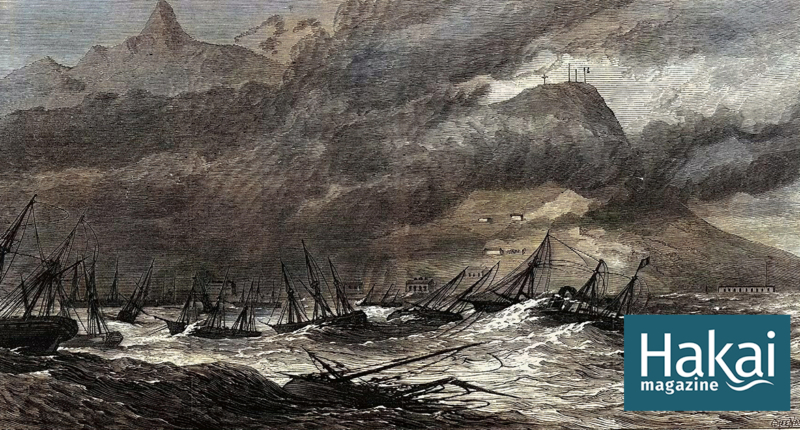Letters dating back to the 17th century have revealed a long-term rise in hurricanes in the south Indian Ocean, according to a recent study. The letters provide valuable eyewitness accounts of storm damage, forming the basis for the longest tropical cyclone record in the southern hemisphere. Researchers used stacks of old letters to determine that the number of hurricanes has quadrupled in the Mascarene Islands region over the past 80 years. Most of the increase has been in low severity Category 1, 2, and 3 storms, which are four times more common since 1940. The most severe storms—Category 4 and 5—have also increased in frequency. The study shows that the Indian Ocean has warmed about 1 °C since the French first arrived in the islands, with a noticeable uptick since 1940, coinciding with the tipping point in storm frequency that the study identified. These findings suggest that there is an alarming trend in hurricane frequency in the south Indian Ocean, with significant implications for the Mascarene Islands and beyond.
Uncovering the Rise of Hurricanes in the South Indian Ocean Through 300-Year-Old Letters
Recently, researchers have discovered that the number of hurricanes in the south Indian Ocean has significantly increased over the past 80 years. This surge in storms coincides with a local rise in seawater temperatures, which could be the result of climate change. These findings were made possible through the use of old letters, including one written in 1743 by the governor of Isle de France (now known as Mauritius), a French colony at the time.
Letters like this one provide valuable insight into the storm record of the Mascarene Islands, a small archipelago located to the east of Madagascar. Prior to the information age, weather records were primarily based on eyewitness accounts recorded in paper documents. In this case, stacks of old letters were used to determine that the number of hurricanes has quadrupled in the region in the last 80 years.
The French first arrived in the Mascarenes in 1715, which were uninhabited at the time. Despite the Dutch’s failure to start an agricultural colony in the stormy islands, the French persisted and transported thousands of slaves from Mozambique and Madagascar to harvest crops and build sugar refineries. Reports were scribbled by representatives of these early trading companies and sent back to Europe to update anxious investors on the day-to-day management of ships and sugar.
To determine past hurricane frequency, climate historian Emmanuel Garnier and his coauthors tracked down hundreds of years of colonial correspondence from archives in Mauritius, Réunion, England, and France. The researchers then translated the letter writers’ observations into data. They leafed through the yellowed pages to find descriptions of sea state and the damage to people, property, and trade, using those details to rank each storm on the Saffir-Simpson Hurricane Wind Scale.
Overall, these letters provide priceless clues for climate historians who are piecing together the storm record of the Mascarene Islands. While data from satellites, ship-based sensors, and drifting ocean buoys form the backbone of weather records today, these old letters give us a glimpse into the past and help us understand how hurricanes in the south Indian Ocean have changed over the centuries.
The 300-Year-Long Hurricane Record of the Mascarene Islands Reveals an Alarming Trend
The Mascarene Islands, located to the east of Madagascar, have experienced a surge in hurricanes over the past 80 years, according to a recent study that utilized stacks of old letters dating back to the 17th century. These letters, including one from the governor of Isle de France (now Mauritius) in 1743, provide valuable eyewitness accounts of storm damage, forming the basis for the longest tropical cyclone record in the southern hemisphere.
Between 1720 and 1940, cyclones that made landfall on the Mascarene Islands were relatively infrequent, with just three hurricanes every 20 years. However, since 1940, the average has jumped to 14 storms per 20-year interval. The most significant increase has been in low severity Category 1, 2, and 3 storms, which have become four times more common. The most severe storms, Category 4 and 5, have also increased in frequency.
The chronology includes records from every year between 1695 and 2007, meaning it likely references nearly every storm. “Very few, if not no, cyclones have escaped us,” says Emmanuel Garnier, a climate historian who led the study. The study also shows that the Indian Ocean has warmed about 1 °C since the French first arrived in the islands, with a noticeable uptick since 1940, coinciding with the tipping point in storm frequency that Garnier and his coauthors identified.
While some researchers can identify past storms from disturbances in underwater sediments, the rocky Mascarenes haven’t left much of a sediment record to explore, according to Carlos Loureiro, a marine geoscientist at the University of KwaZulu-Natal in South Africa. Thus, this historical work provides a much-needed window into a challenging region.
This study is crucial as it allows scientists to spotlight the increasing number of hurricanes in the Mascarenes. “Those two or three hundred years are really important to make sure that the last decades are exceptional,” says Loureiro. “I think it’s quite an important study.”
Although new storms keep coming, researchers continue to uncover the past. Cyclone Freddy, which struck in February 2023, skirted the Mascarenes and sank a fishing boat, with the crew of 16 still missing. The storm subsequently pummeled the African coast, killing hundreds of people in Madagascar and mainland Africa. When Freddy finally fizzled over Mozambique and Malawi, it held the title of the longest-lasting tropical cyclone in recorded history.
Ultimately, these findings suggest that there is an alarming trend in hurricane frequency in the south Indian Ocean, with significant implications for the Mascarene Islands and beyond.
300-Year-Old Letters Reveal a Long-Term Rise in Hurricanes in the South Indian Ocean, according to a recent study that used stacks of old letters to determine that the number of hurricanes has quadrupled in the region over the past 80 years. These letters provide priceless clues for climate historians who are piecing together the storm record of the Mascarene Islands, a small archipelago located to the east of Madagascar.
Don’t miss interesting posts on Famousbio









